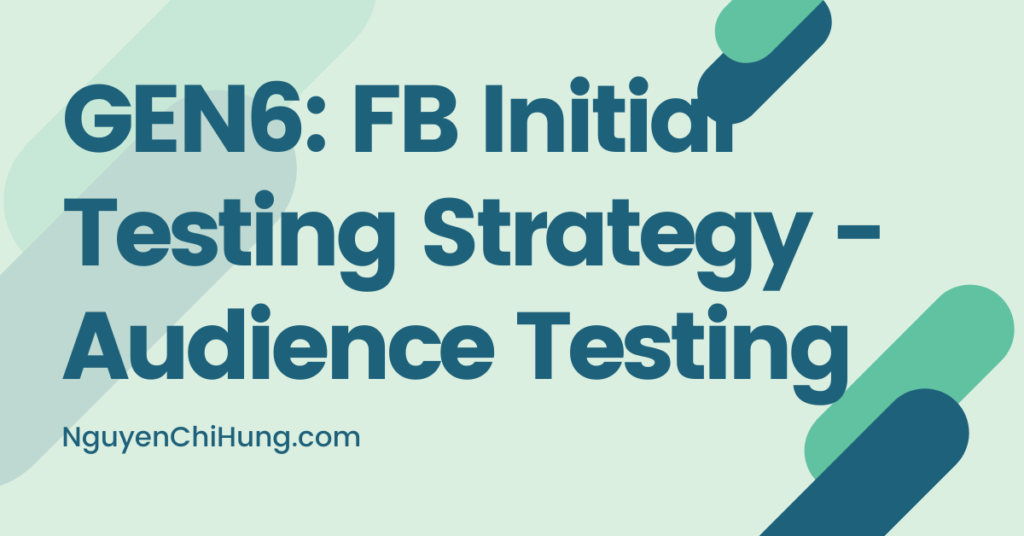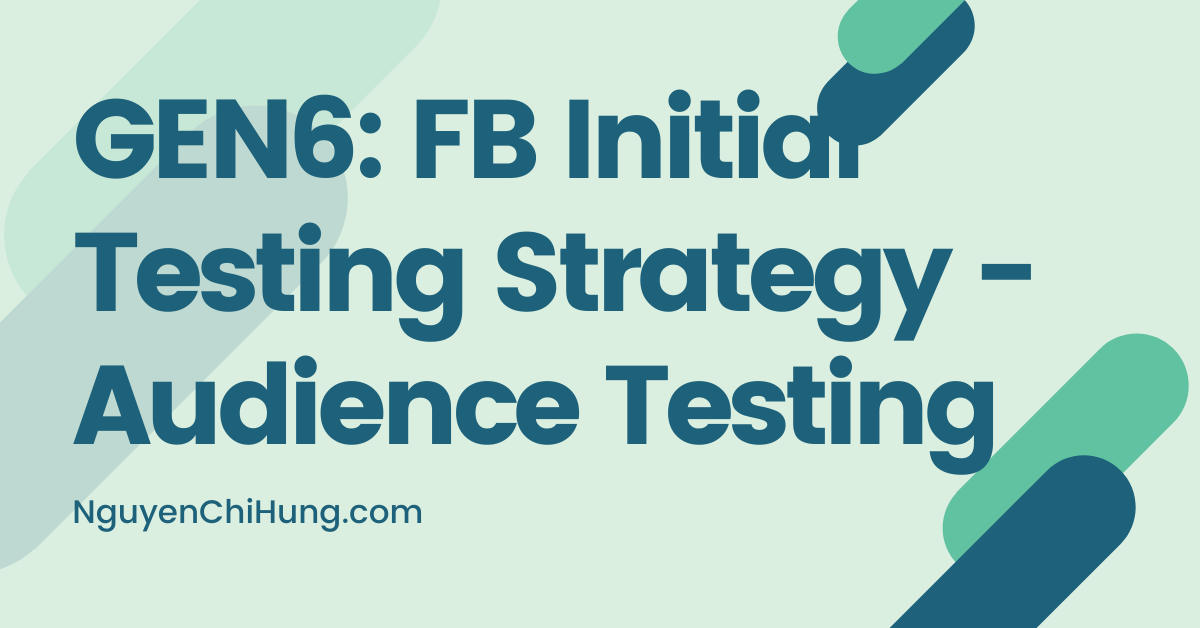GEN6: FB Initial Testing Strategy – Audience Testing

One of the main challenges faced by FB newbies is what to test first and how. The following methodology is what many experts suggest, and one I’ve found to work well – so now I’m recommending it to you.
I’ve briefly covered the basic FB campaign structure in a previous post: https://stmforum.com/forum/showthrea…rgeting-Part-1
In this post, I would like to further suggest how to set up your first batch of campaigns for testing any new offer/product you may be promoting.
There are numerous ways to do testing on FB, but the approach below should serve you well until you develop your own test approach.
Goal
With this first batch of campaigns, we’ll be aiming to accomplish 2 major things:
1)Get an initial idea on how good your current funnel is. This includes the product or service you’re promoting and the corresponding sales page/site, plus any presell page/site (i.e. per-lander/lander).
2)Identify some promising audiences to test further. In this first batch of campaigns, we’ll be focusing on testing different audiences to see which ones give the best results. (In the later parts of the tutorial, we’ll be testing more ads for these promising audiences to nail down the best ad+audience combinations, then scaling those.)
Important: In order to do justice to the product/service you’re promoting, it’s crucial that you 1)choose suitable audiences and 2)craft great ads for each audience. This is why it’s so important to spend time on the research phase. If you can’t show great ads to the right audiences, you can have the best product/service on earth and still get mediocre results.
Identify Angles For Each Audience
Before now, you’ve already identified a list of different audiences you feel would convert for your product/service.
What you can do now is go through everything in your research word doc, and identify advertising angles for each of those audiences.
This post by @caurmen contains the very best threads on how to find angles: https://stmforum.com/forum/showthrea…ve-Angle-Index
Do read at least a few of those, even if you feel you’re already quite good at crafting angles. This is one skill no marketer can be TOO good at!
And if you need to do more online research to identify more angles, do so now.
Some of the more general advertising angles can be suitable for multiple/all audiences, while others may only be suitable for a specific audience.
And of course, note down the audiences and the corresponding advertising angles in the research doc. It would probably be good to start a new section in the doc for this – maybe call it “Audiences and Ad Angles”.
Campaign Structure for Audience Testing
This is how I would recommend setting up these test campaigns:
–Pick 2-3 audiences that you feel have the best chances of success.
–For each of these audiences, pick 2-3 ad angles that you feel are the best. (Note that some angles and ads can be used for multiple audiences, as long as they’re relevant.)
This is all you need to do before progressing to the lessons on ad creation and campaign creation.
In the lessons on ad creation, you’ll be advised to create 1-3 ads per angle.
In the lessons on campaign creation, you’ll be advised to set up a test campaign in this fashion, to test each audience to see which one(s) will work:
–Up to 3 different ads per adset. e.g. If an audience has 3 angle x 3 ads/angle = 9 ads, then you will create 3 adsets targeting that audience, with 3 ads per adset. The ads in a particular adset don’t all need to be of the same angle, although they can be. Set up adsets in this way for each audience.
–Assign a test budget of 1 payout per adset per day. A “payout” is the revenue from each conversion (sale/lead) if you’re promoting an affiliate offer. If you’re selling your own ecom product, a “payout” would be the sales price minus sourcing costs and all other costs, i.e. the amount you’d be making in profits if your ad spend was zero.
Important: If you can afford to spend more money on testing, by all means test as many audiences and ad angles as you wish, and assign a bigger budget to each adset as you wish. The only reason for “restricting” the testing to 2-3 audiences with 2-3 angles each and 1-3 ads per audience+angle, is to help beginners to get their initial experience without spending too much.
On the other hand, if you’re wanting to spend less of a daily budget on testing, you can assign a test budget of less than 1 payout to each adset. e.g. If payout = $20, you can set the daily budget of each adset to $10 or even $5. Of course, you’d need to wait longer to collect enough data to make campaign decisions (such as which ads/adsets to cut or scale).
We’ll go into campaign budget and adset budget in the later lessons. For now, just make sure you have your audiences and angles ready.
Amy
